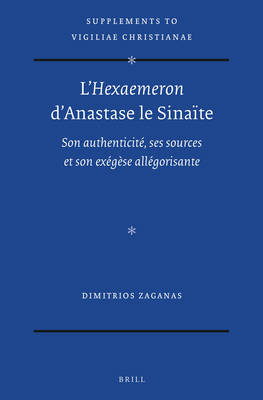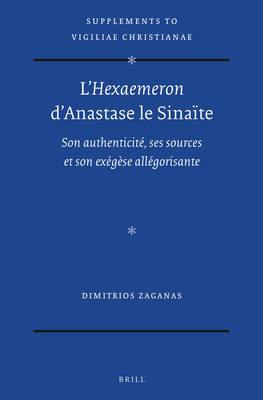
- Afhalen na 1 uur in een winkel met voorraad
- Gratis thuislevering in België vanaf € 30
- Ruim aanbod met 7 miljoen producten
- Afhalen na 1 uur in een winkel met voorraad
- Gratis thuislevering in België vanaf € 30
- Ruim aanbod met 7 miljoen producten
Zoeken
Omschrijving
The Hexaemeron of Anastasius of Sinai (late 7th-early 8th c.) expounds the creation account and the Adam and Eve story as foreshadowing the mystery of Christ and the Church, an idea that goes back to Origen and beyond. The commentary remained unpublished in Greek until 2007, received only scattered attention, and has been often considered as apocryphal. In this book, the first of its kind in any language, Dimitrios Zaganas firmly establishes its authenticity, investigates its genesis and date, offers detailed analysis of its numerous sources, and studies its distinctly allegorical approach to Genesis 1-3. Several emendations of the Greek text are suggested in the appendix.
L'Hexaemeron d'Anastase le Sinaïte (fin VIIe-début VIIIe s.) traite du récit de la création et de l'histoire d'Adam et Ève comme préfigurant le mystère du Christ et de l'Église, une idée qui remonte à Origène et au-delà. Le commentaire est resté inédit en grec jusqu'en 2007, n'a reçu qu'une attention distraite et a été souvent considéré comme apocryphe. Dans cet ouvrage, le premier consacré à l'Hexaemeron, Dimitrios Zaganas établit fermement son authenticité, examine sa genèse et sa datation, propose une analyse détaillée de ses nombreuses sources et étudie son approche clairement allégorique de Genèse 1-3. Dans un appendice sont proposées plusieurs corrections au texte grec.
L'Hexaemeron d'Anastase le Sinaïte (fin VIIe-début VIIIe s.) traite du récit de la création et de l'histoire d'Adam et Ève comme préfigurant le mystère du Christ et de l'Église, une idée qui remonte à Origène et au-delà. Le commentaire est resté inédit en grec jusqu'en 2007, n'a reçu qu'une attention distraite et a été souvent considéré comme apocryphe. Dans cet ouvrage, le premier consacré à l'Hexaemeron, Dimitrios Zaganas établit fermement son authenticité, examine sa genèse et sa datation, propose une analyse détaillée de ses nombreuses sources et étudie son approche clairement allégorique de Genèse 1-3. Dans un appendice sont proposées plusieurs corrections au texte grec.
Specificaties
Betrokkenen
- Auteur(s):
- Uitgeverij:
Inhoud
- Aantal bladzijden:
- 304
- Taal:
- Frans
- Reeks:
- Reeksnummer:
- nr. 172
Eigenschappen
- Productcode (EAN):
- 9789004472464
- Verschijningsdatum:
- 9/12/2021
- Uitvoering:
- Hardcover
- Formaat:
- Genaaid
- Afmetingen:
- 155 mm x 235 mm
- Gewicht:
- 632 g

Alleen bij Standaard Boekhandel
+ 497 punten op je klantenkaart van Standaard Boekhandel
Beoordelingen
We publiceren alleen reviews die voldoen aan de voorwaarden voor reviews. Bekijk onze voorwaarden voor reviews.











